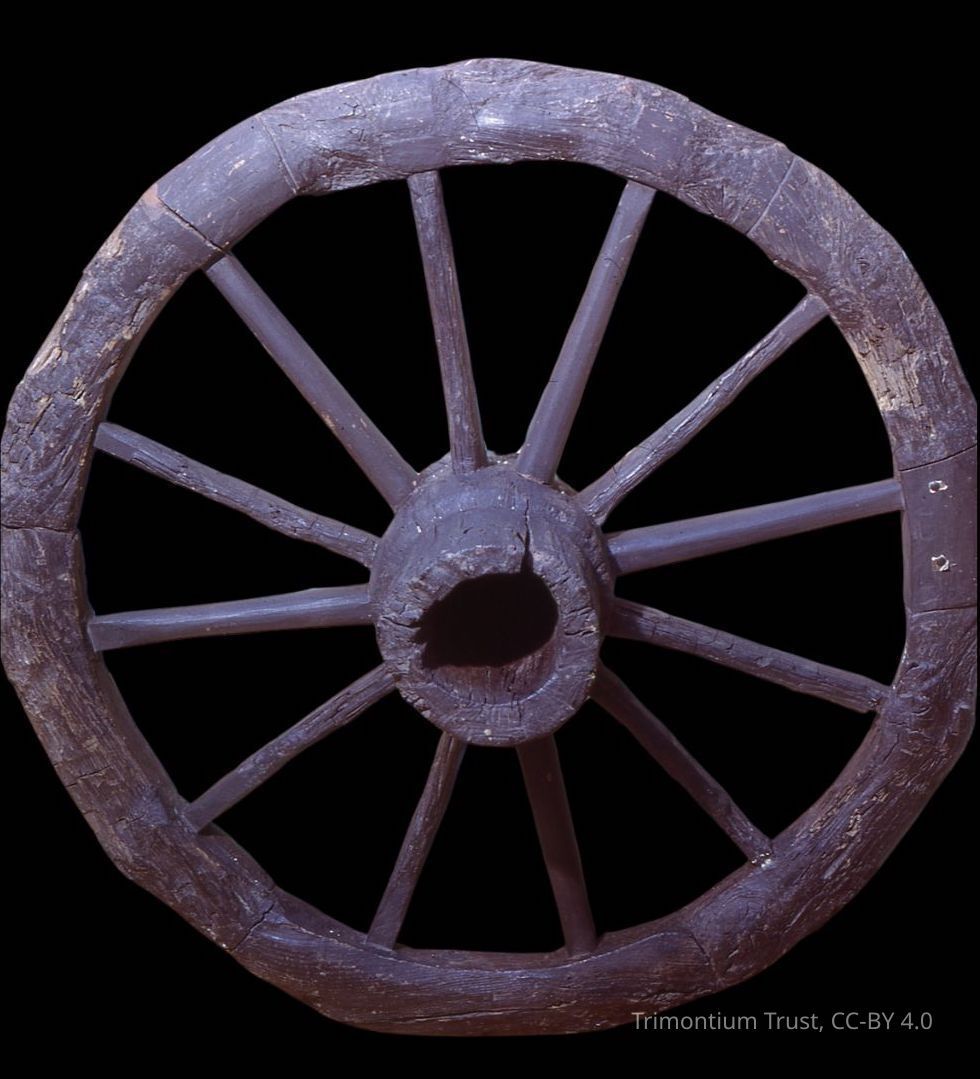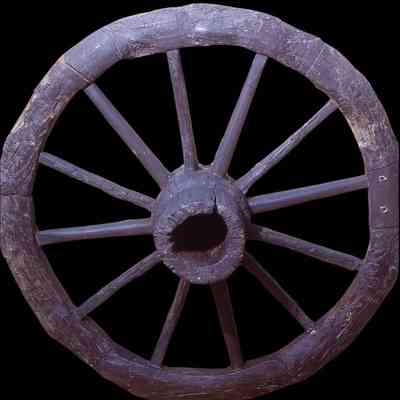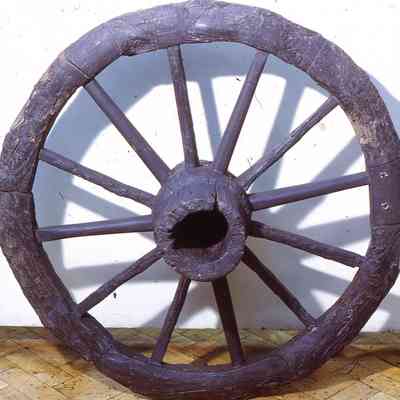Wheel, rota cambiginata
Name/Title
Wheel, rota cambiginataEntry/Object ID
X.FRA 478Description
Rota cambiginata, wheel of oak from the Roman site at Newstead (Trimontium), used between 140 and 180 AD. The hub was carved from a single piece of oak. The rim (or felloe) of the wheel is made up from six joined sections. Twelve spokes -nearly square - (five of which are modern reconstructions) join it to the central piece which has a hole for the axle.Use
Wheels are used to help move and transport the cart/object it is attached to.Context
Found in Pit LXX. A heavier wheel than the wheels from Pit XXIII. A rare survival of a wooden wheel. It has been restored from fragments found at the bottom of pit LXX on the site of the Roman fort of Trimontium. "The Romans hauled materials over short and long distances in wagons and carts to order to set up and provision their network of forts. Often all that is left of the vehicles are metal fittings, bindings and occasionally the tyres." - NMS ScranCollection
National Museums ScotlandCategory
Wheel
Transportation
Acquisition
Accession
X.FRA 478Source (if not Accessioned)
National Museums ScotlandMade/Created
Date made
140 - 180Time Period
2nd centuryEthnography
Cultural Region
Continent
EuropeCulture/Tribe
Romano British, Roman



